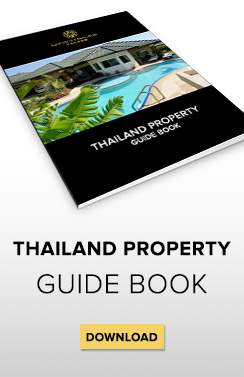Samsung Pay Officially Launches in Thailand
Thailand has become the tenth country in which Samsung Pay has launched.t’s actually more of an expansion, the Samsung having launched a beta trial in the country this past autumn. In a statement announcing its official launch in the country, Thai Samsung Electronics VP of IT and Mobile Communications Wichai Pornpratang asserted that the platform has “won a warm welcome from consumers.”
The company also framed the official launch of Samsung Pay as an initiative aligned with the government’s efforts to transform the country into a cashless society – part of a larger digitization program called Thailand 4.0. The mPayment platform launches with the support of Bangkok Bank, Citibank, KasikornBank, KCC, KTC, Siam Commercial Bank, and Mastercard and Visa.
The Thai launch of Samsung Pay follows soon after a planned launch in the UK was delayed, and amid anticipation that it will soon debut in India. It is currently active in South Korea, China, Spain, Singapore, Australia, Brazil, Russia, Canada, and the US.
Source:mobileidworld
Demand for professional property management thriving
As the real estate market in Thailand evolves, demand for professional property management services in the country has been rising rapidly, according to international property services firm JLL.
Besides a greater number of property developments, the increased awareness of property owners and investors regarding the necessity to secure professional management of their properties is a major factor that has driven this demand.
“After a long learning period, many property owners realised that developing a property is one specialty, while managing that asset is another. Property management is more than just housekeeping and security work. There is plenty of evidence that without professional property management, real estate assets can significantly lose competitiveness no matter how well they were built,” says Suphin Mechuchep, managing director of JLL.
In the Bangkok office sector, the total stock of existing supply is more than 8.5 million square metres. JLL estimated that nearly 60% of the office buildings in Bangkok are currently managed by service providers, compared to 30% estimated for 2010.
In the condominium sector, there are more than 420,000 completed units in the capital. Most of these developments are managed by service providers.
Dexter Norville, director of property and asset management at JLL, said a changing trend contributed to the shift.
“Within the first year or two of a new condominium development completing, the property manager is typically appointed by the project developer that may have an in-house property management arm serving its customers. In subsequent years, the selection of a property management provider is nearly always handled by the development’s juristic person. This has contributed to the growth in demand for property management by independent service providers.”
While the most important driver of growth is the increasing need for owners and investors to protect and enhance the value of their assets, other factors also come into play.
First, property owners need to enhance the efficiencies of their real estate. While there is constant pressure on them to minimise operating costs, tenants and residents are demanding better building services.
Furthermore, as the building and construction industry evolves, new property developments in Thailand have been built and equipped with far more complicated technologies, compared to a decade ago.
These modern property developments typically require more complicated technical support and maintenance, and in many cases, need technology transfer and best practices from more developed real estate markets.
Due to the same reason, a higher level of property management offering more sophisticated technical and engineering support is needed.
Third, as the industry is going green, property owners need to rely on the know-how from an experienced international property management firm that can help them achieve sustainable solutions through an integrated approach to environmental sustainability management across the asset life cycle.
As well, a property is an asset that is exposed to risks. Only a qualified property and asset management firm with a team of experienced professionals can offer property owners with holistic site-specific risk processes to minimise those risks.
Source: Bangkok Post
Thailand Visa incentives may last longer
Thailand Tourism and Sports Ministry proposes to the cabinet to extend visa incentives for at least another three months in a bid to lure more foreign tourists and drive the industry during the low season. The plan is expected to offset the sharp drop of Chinese tourists following the government’s zero-dollar crackdown in late September last year, said Tourism and Sports Minister Kobkarn Wattanawrangkul on the sidelines of Asean Tourism Forum 2017 in Singapore.
The cabinet last year waived visa fees and halved the visa-on-arrival fee to 1,000 baht for tourists from 19 countries from Dec 1, 2016 to Feb 28, 2017.
This special visa scheme benefits visitors from Andorra, Bulgaria, Bhutan, China, Cyprus, Ethiopia, India, Kazakhstan, Latvia, Lithuania, the Maldives, Malta, Mauritius, Romania, San Marino, Saudi Arabia, Taiwan, Ukraine and Uzbekistan.
The Tourism Department forecast a 13% drop in Chinese tourists this month, which is still lower than in November, which plunged 30% and was the biggest monthly contraction for Chinese arrivals to Thailand. Mrs Kobkarn revealed the Chinese tourist market has gradually improved. Five Tourism Authority of Thailand offices in China reported Chinese tourists are returning to Thailand and the number of visa applications at Thai embassies in China is double the October-November period.
“Increasing visa applications means the impact of the zero-dollar tour crackdown is fading. This visa measure will help bring them back,” she said.
Mrs Kobkarn said the visa scheme has increased foreign tourist arrivals since December. Last year there were 32.6 million arrivals in Thailand. During Jan 1-20, Thailand welcomed 1.8 million international tourists, up 6% year-on-year. The incentives are in line with the World Travel and Tourism Council’s focus on the benefits visa facilitation.
Source:Bangkok Post
China and Japan set for Thailand & Malaysia high-speed railway fight
Thailand and Malaysia are set to start talks on the construction of a 1,500km high-speed railway that would connect the two countries’ capitals and enhance regional connectivity.
Arkhom Termpittayapaisiht, Thailand’s transport minister, told the Nikkei Asian Review that he hopes to meet with his Malaysian counterpart soon. “We will discuss how we can get foreign countries involved in the project like ‘China or Japan’ or ‘China and Japan,'” he said. “But Malaysia seems to have more favor in China.”
The Bangkok-Kuala Lumpur route is a large section of the pan-Asia railway network plan — initially proposed by former Malaysian Prime Minister Mahathir Mohamad at a 1995 meeting of leaders of the Association of Southeast Asian Nations.
The idea was to build a rail network that runs all the way from Singapore, to the southern Chinese city of Kunming, through Malaysia, Thailand, Myanmar, Cambodia, Vietnam and Laos.
Much of the existing rail network is old and unsuitable for high speed trains. Modernization work is underway to improve mobility of people and goods and help boost the regional economy.
“ASEAN cities should be connected by high speed rail,” Arkhom said, adding that, unlike air routes, a railway connection “can promote cities along the railway line.”
Today, the concept chimes closely with Chinese leader Xi Jinping’s Belt and Road initiative, which aims to create an economic corridor from Asia to Europe by developing overland and maritime routes.
Chinese involvement in regional transport networks is on the increase. A railway link between Kunming and the Laotian capital Vientiane is now under construction. This will connect with another line that China is involved in, linking Nong Khai on the Thai side of the border with Bangkok.
It is hard to imagine Beijing will not jump to attention if Thailand and Malaysia seek help for the planned high-speed railway. Japan is also eager to export its shinkansen bullet train technology. The shinkansen is already up and running in Taiwan and there are deals signed in India and Thailand. In 2015, however, Japan lost out to China in the race for Indonesia’s high-speed rail project.
Source: Nikkei Asian Review
Ho Chi Minh City named world’s 2nd most dynamic city
Technology and innovation propel the economic hub and Hanoi into the top 10 of fastest changing cities around the world. Vietnam is one of the most dynamic countries in the world with Ho Chi Minh City and Hanoi both named in the top 10 cities that have successfully embraced technological change for growth, according to a new report released at the World Economic Forum’s annual meeting.Ho Chi Minh City came second, only after India’s Bangalore, in the JLL City Momentum Index 2017 which was compiled by Chicago-based financial and professional services firm JLL. Vietnam’s southern metropolis ranked sixth in 2015 but dropped out of the top 10 last year.
Hanoi was at number eight, cracking the top 10 for the first time.The index, first published in 2014, measures cities based on how well they absorb, adapt and leverage technology and innovation. It examines 42 variables in each of 134 cities or metropolitan areas including economic growth, population, innovation capacity, access to education and environmental quality.
Asia-Pacific cities comprised half of the 2017’s top 30 list.Ho Chi Minh City and Hanoi, as well as Nairobi, are categorized as “High Potential Cities” driven by low costs, rapid consumer market expansion and high levels of foreign direct investment.“These cities continue to attract capital from foreign investors betting on their transition from low-wage manufacturing to high-value activities,” Jeremy Kelly, JLL research director, said in a statement.But he noted that the JLL index is not a measure of the “best” cities in which to invest.“It’s intended to identify change and highlight which cities or metropolitan areas may be best at positioning themselves to compete in today’s ever-changing economic landscape,” he said.
“Cities that support and nurture technological changes have demonstrated remarkable momentum and taken a more prominent role in shaping our landscape.”
Source:vnexpress















